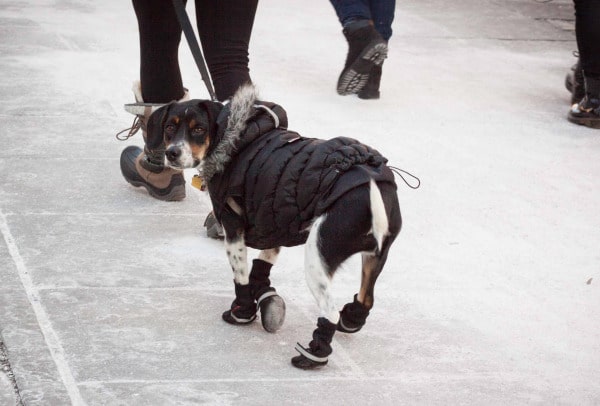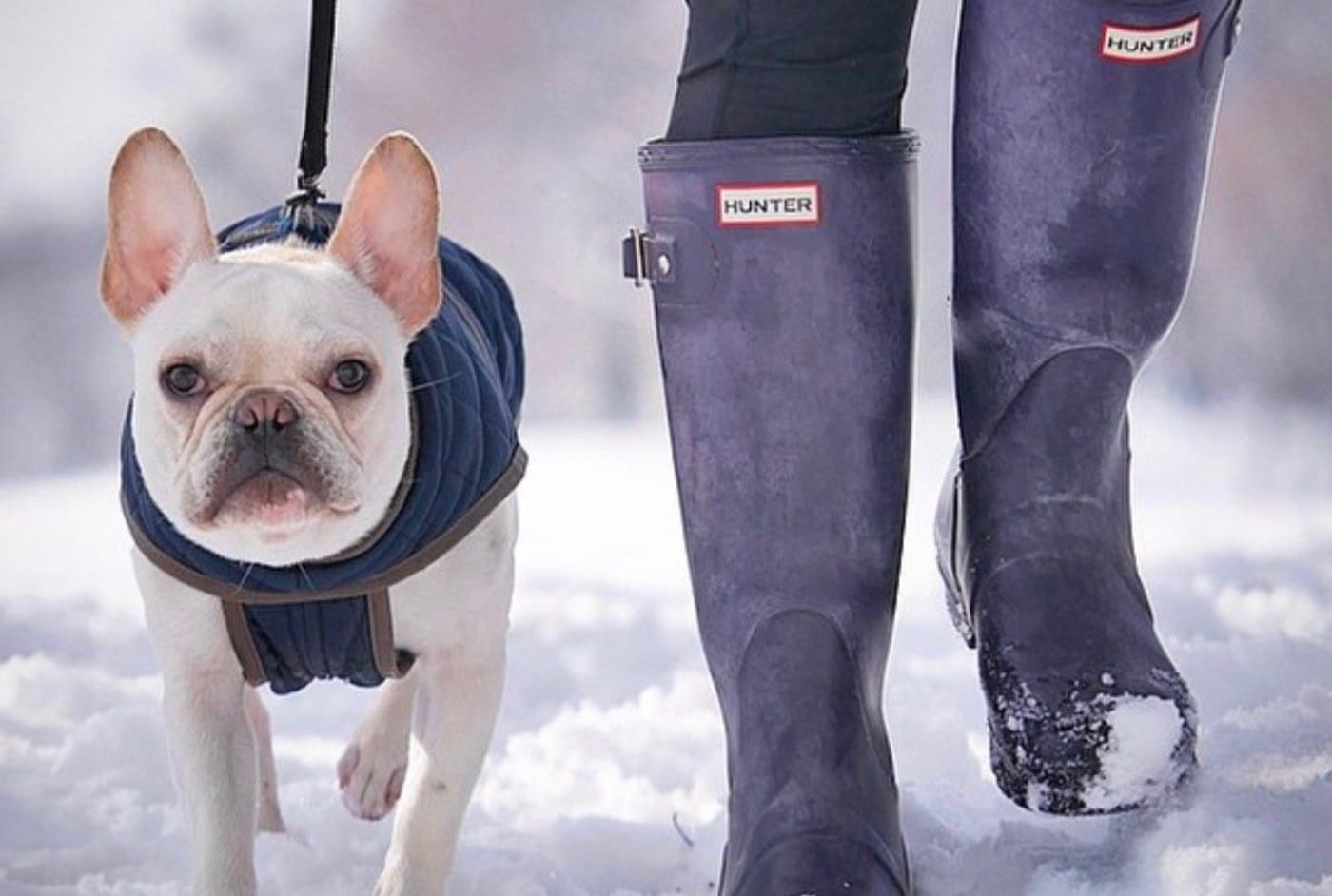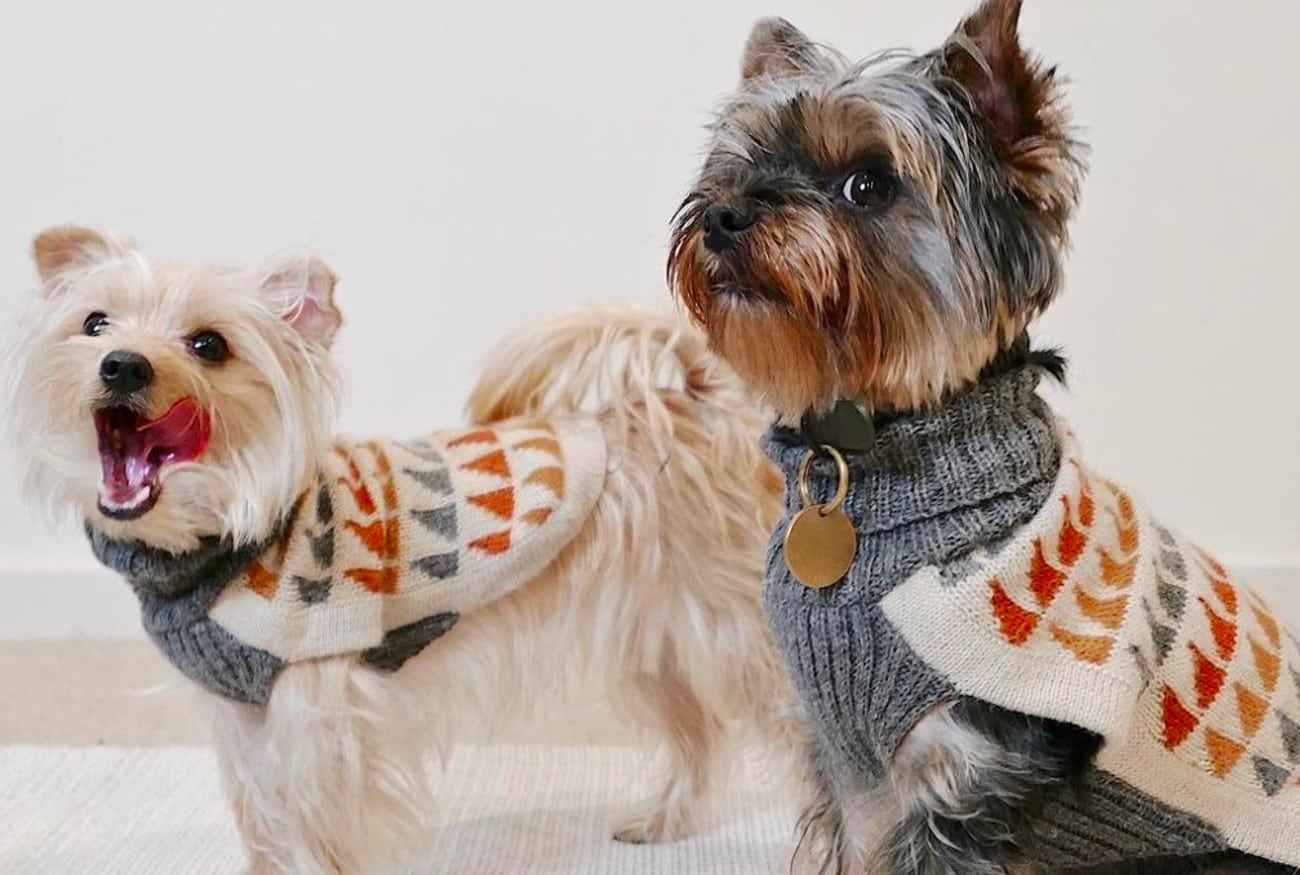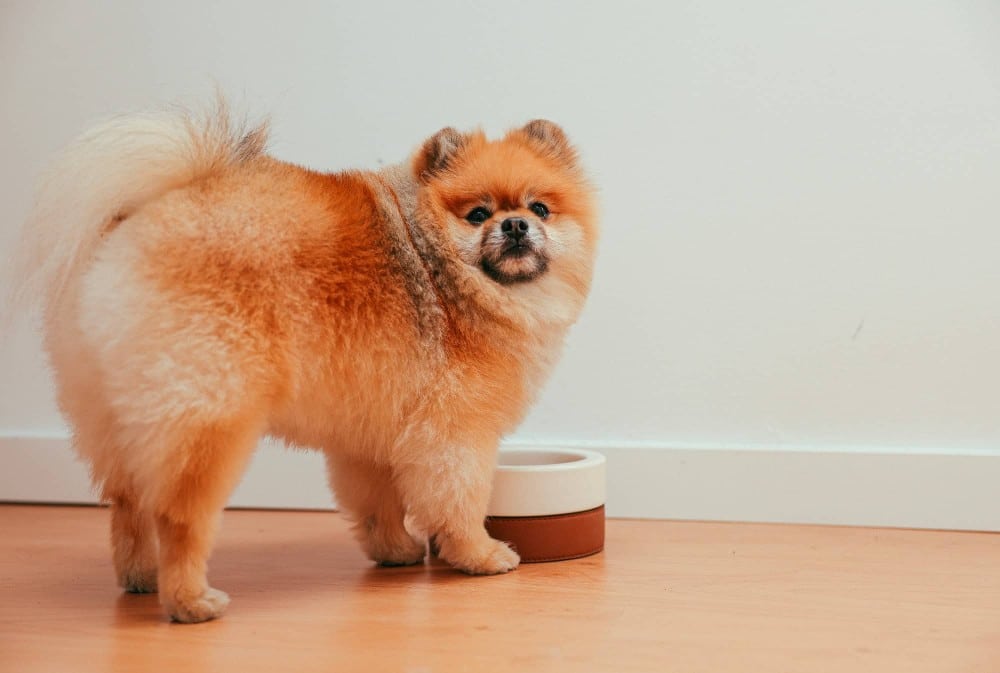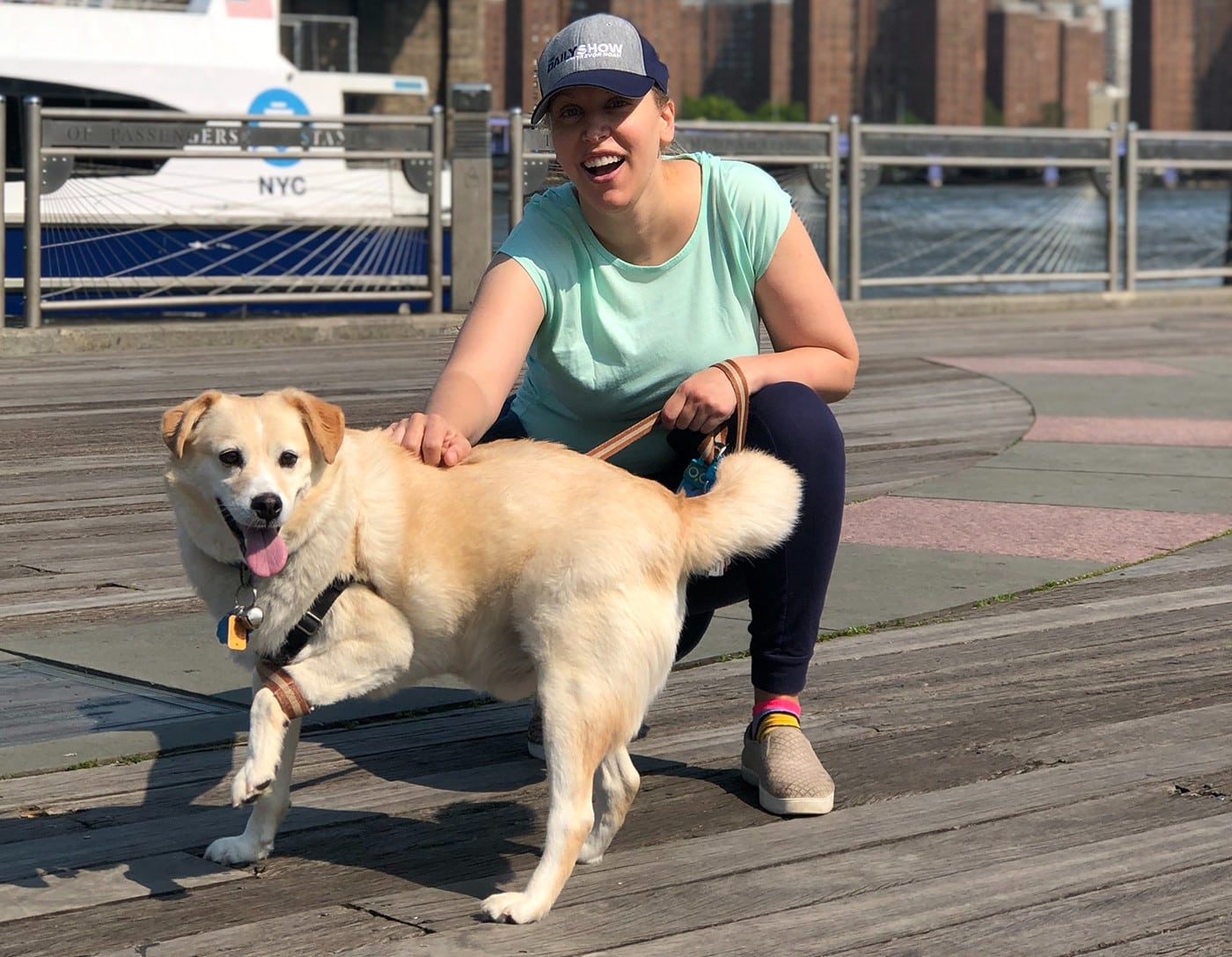Depending on where you live, the question of whether or not to buy your dog a jacket is an easy one. Upper East Side pups can usually be seen decked out to rival Carrie Bradshaw. Pooches in Tulsa, Oklahoma? Not so much.
But the question of whether or not your furry best friend needs a coat this winter isn’t one you should solely base on your location. Rather, there are other factors at play.
While dogs naturally have their own layering system — fur and hair — some have a thicker natural coat than others.
Related: Woman Quits Her Job to Knit Sweaters for Chilly Homeless Greyhounds
“Dogs definitely have to wear coats in winter,” says Dr. John of The Pet Doctor of Flushing. “Especially if they’re small breeds — min-pins, chihuahuas — or short-haired breeds, like boxers. Younger dogs, or dogs who don’t have a lot of fat on them, also needs coats.”
But little guys and short-haired breeds aren’t the only ones who benefit from a wardrobe: Dogs who have been thoroughly groomed and shorn will likely need something extra to keep them warm. (Think: poodles dolled up in the French style and shaved down to the skin on their rumps and bellies.) You might also want to consider buying a coat for your older dogs, the ones who are possibly a little frailer or just take a bit longer outside to take care of business.
If your dog isn’t giving signs one way or another regarding her winter fashion needs, first consider her breed. Dogs bred for colder climates, such as huskies, akitas and the aptly named American Eskimo dog, will probably be better off than you are over the course of the season. But Dr. John does note “the kinds of walks you take in the transitional months in the fall will affect what kind of undercoat grows in for the winter.”
Various shepherds and shepherd mixes, too, have coats that were specifically designed to withstand colder temperatures, and water-loving, thick-coated breeds like Labradors and certain retrievers will probably be able to make due au natural until spring.
Related: Not All Dogs Like Cute Christmas Sweaters
Still, Dr. John says, even the hardiest breeds should keep walks short for sub-zero or polar vortex temperatures. “Get ‘em out there, have ‘em do their business and then come back inside” — advice that is likely music to our frostbitten human ears. “Also keep in mind that the salt thrown on the sidewalk to melt ice is caustic to dog’s paws,” he advises. Simple solution for this? Dog booties. If your pup isn’t down for these shoes, make sure to carefully clean their paws after every walk. “Licking the salt off their pads can lead to gastrointestinal problems,” he says.
To keep paws soft and smooth, consider applying paw wax, when paws get cracked and dry. After all, you wouldn’t be caught without ChapStick in the winter, so why should your pup? If you’re ambitious, you can even find a homemade, all natural recipe, and your dog will love you for it even more than he already does.
So what type of outerwear should you be looking for? “The same type of insulation you would wear yourself!” Dr. John says. He does suggest, however, to make sure that dog jackets aren’t too cumbersome. “Make sure it’s washable, and keep their coats clean. Also, quilted fabric is best, as it traps body heat.”
For those dogs that are telling you they need a little something in the way of clothing, we have some suggestions for you. Is she reluctant to cross the threshold into the snow or rain? Maybe consider a raincoat. This one from Ralph Lauren in “Danger Yellow” can make for one half a very fierce pair.
Is he more sluggish before his morning walk during the dreary winter months? Or shaking like a leaf? Invest in a puffy parka like this one from L.L. Bean, and your pup will be more stylish than you!
For a greater variety of more affordable options, including hooded windbreakers, knit sweaters and flannel, you only need to look as far as your local PetSmart.
Related: Go Green With These 10 Products
The featured image was taken by our talented Monique Toro.













